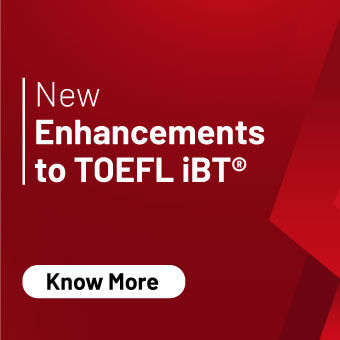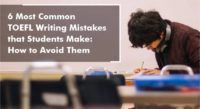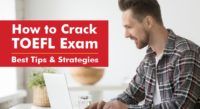
Digging Deep Into the TOEFL Exam
The Test of English as a Foreign Language, or TOEFL, is a standardized English proficiency test used to measure a non-native English speaker’s English ability. TOEFL scores are accepted by a number of universities throughout the world, and they are also used to screen job applicants and immigration applicants to English-speaking nations.
The Educational Testing Service (ETS) is the body that conducts the TOEFL exam with an aim to measure the level of proficiency of a non-native English speaker to communicate in English in all forms, whether reading, writing, speaking, or listening.
To assess your ability to communicate, the test is divided into four sections, namely Listening, Reading, Speaking, and Writing which extends over a duration of four and a half hours.
- The overall TOEFL score ranges from 0 to 120.
- The overall score and sectional scores will be sent to you after you complete the test.
- The Countries Which Accept TOEFL – are the USA, UK, Australia, Canada, New Zealand, and across Europe and Asia.
- TOEFL is one of the most preferred English language tests for students desiring to study abroad.
TOEFL Exam Syllabus
As a test taker, you will be required to solve integrated tasks that combine more than one skill. For example, a section might have a passage to read after which an audio recording of a lecture or a discussion based on the passage will be played and then you might be asked to verbally answer the questions or summarize depending on the section. Let us have a synopsis of each of the sections.
Are You Planning to Prepare for TOEFL?
Click Here to Book Your Free 1-On-1 Session with Experts
TOEFL Reading
-
- Duration: 35 minutes
- 0Score range: 0 to 30
- Total number of questions: 20
- May have multiple passages
- Each passage is followed by a set of questions based on the passage which need to be answered.
TOEFL Reading Question Types
TOEFL reading section measures students ability to read and understand the materials, books, etc. that are used in academics. Reading section consists of two passages of 700 words approx. Number of questions in each passage is 10 and their are total 20 question in reading section. Total duration of the reading section is 35 minutes.
TOEFL Listening
-
- Duration: 36 minutes
- Score range: 0 to 30
- Total number of questions: 28
- You will be required to carefully listen to audio recordings of academic lectures, classroom discussions, and conversations
- Each recording will have questions based on the lectures/discussions which will need to be answered.
TOEFL Speaking
-
- You will be required to speak based on the listening and reading tasks
- Duration: 16 minutes
- Score range: 0 to 30
- Total number of speaking tasks: 4
- You will be required to express your opinion on a familiar topic
- You will be required to speak based on the listening and reading tasks
Question 1: Independent Speaking Task — requires you to draw entirely on your own ideas, opinions and experiences when you respond.
Questions 2–4: Integrated Speaking Tasks — require you to combine your English-language skills — listening and speaking, or listening, reading and speaking — just as you would in or out of a classroom.
Are You Planning to Prepare for TOEFL?
Click Here to Book Your Free 1-On-1 Session with Experts
TOEFL Writing
-
- Duration: 29 minutes
- Score range: 0 to 30
- You will be required to write essay responses based on the reading and listening tasks
- You will be required to support an opinion in writing
- There are two writing tasks.
- Integrated writing task (20 minutes) — read a short passage and listen to a short lecture, then write in response to what you read and listened to.
- Writing for an Academic Discussion task (10 minutes) — state and support an opinion in an online classroom discussion.
TOEFL Exam Pattern
| Section | Time Limit | Questions | Tasks | |
|---|---|---|---|---|
| Reading | 35 minutes | 20 questions | Read passages and respond to questions | |
| Listening | 36 minutes | 28 questions | Answer questions about brief lectures or classroom discussions | |
| Speaking | 16 minutes | 4 tasks | Talk about a familiar topic and discuss material you read and listened to | |
| Writing | 29 minutes | 2 tasks |
|
|

















